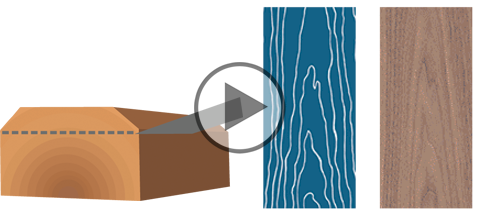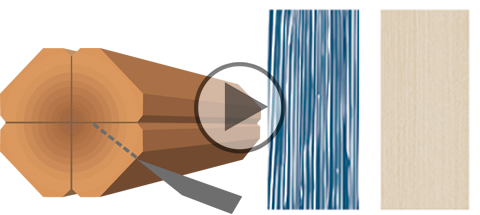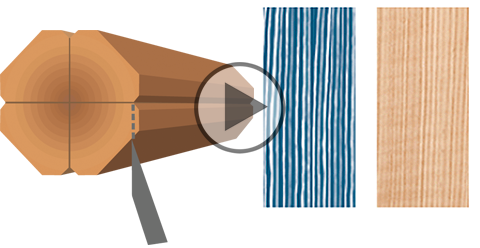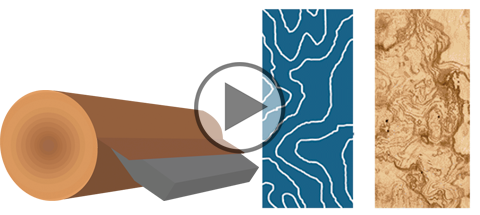There are several of ways that veneer can be cut from a log, each producing its own effects in the grain. Whether you are looking for a dramatic cathedral grain or a minimalist stripe, it is all in the cut.
Flat cut
Using a half log, individual leaves of veneer are sliced parallel to the original cut. This produces the easily recognized "cathedral" effect in the center of the leaf and a straighter grain along the edges.
Half round
A half log is placed slightly off center in the slicer and cut slightly across the annual growth rings, producing a combination of rotary and flat cut effects.
Quartered
Using a quartered log, individual leaves of veneer are sliced at a 90-degree angle to the growth rings, producing a striped, straight grain effect. In some species (most notably white oak) the quarter cut produces a flake pattern. As a result the medullary rays that radiate outward run like ribbons perpendicular to the grain.
Rift cut
A quartered oak log (the primary species that is rift cut) is sliced about 15 degrees off the quartered position to avoid the flake pattern common in quartered oak. Rift cutting produces a tight, straight, comb-grain effect.
Rotary cut
A full log is turned and the blade peels a continuous sheet of veneer along the annual growth rings. The effect produces wide sheets of bold, variegated grains.
A flitch is bundle of veneer leaves sliced from a single log and arranged as they were cut from the log. Even within the same species, a flitch can vary in color, grain, figure, size (length and width of leaves) and yield (square footage).
Veneer is a natural product. Because of this the color, grain, and figure can vary not only between flitches, but also between individual leaves in a flitch, sometimes even within a single leaf—as the log varies from one end to the other. It's important to inspect a flitch, turning it leaf by leaf to see the progression of color, figure, and grain from end to end.





